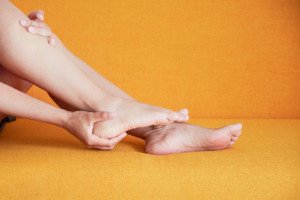
Have you noticed that lately your ankles appear swollen and you’re wondering if this is due to middle age?
“As we get older we may see swelling of our ankles — usually near the last half of the day especially if we stand or sit for long periods,” says John Whyte, MD, board certified internist in Washington, DC, and author of “Is This Normal? The Essential Guide to Middle Age and Beyond.”
Why does this happen?
“We have valves in our veins which typically prevent pooling,” says Dr. Whyte.
“But as we get older the valves don’t work as well or get damaged. Gravity takes control and therefore we have some pooling.
“Fluid due to aging typically resolves by morning; it is usually a small amount; it is never accompanied by difficulty breathing and usually occurs in both ankles/lower legs.”
An assortment of medical conditions can cause fluid buildup in the lower legs and around the ankles, even the feet. Have a medical doctor check the swelling in your feet.
Nurses, too, have a lot of experience with this presentation and are very knowledgeable of it.
If your socks are leaving “imprints” of their patterns in your skin, this most likely is nothing to be alarmed about.
A rubber band around your wrist, left there for a while, will also leave an imprint.
Aging and Your Skin

Shutterstock/Elvira Koneva
As people age, the skin undergoes various changes that contribute to its loss of elasticity and firmness, commonly referred to as losing its “bounce.”
This phenomenon primarily results from a decline in the production and quality of collagen and elastin, two proteins crucial for maintaining the skin’s structure and resilience.
Collagen provides strength and support, while elastin allows the skin to stretch and return to its original shape.
With age, the production of these proteins decreases, and the existing ones become more fragmented and less effective.
In addition to the decline in collagen and elastin, the skin’s ability to retain moisture diminishes over time.
This is partly due to reduced production of hyaluronic acid (“HA”), a substance that helps maintain skin hydration and the so-called plumpness.
As the skin becomes drier, it loses its softness and suppleness, contributing to the formation of fine lines and wrinkles.
The loss of bounce or firmness in skin, as people enter middle age, should not be confused with fluid buildup, swelling or edema.

Dr. Whyte is the chief medical officer of webmd.com. Prior, he was the chief medical expert for almost a decade at Discovery Channel.
 Lorra Garrick has been covering medical, fitness and cybersecurity topics for many years, having written thousands of articles for print magazines and websites, including as a ghostwriter. She’s also a former ACE-certified personal trainer.
Lorra Garrick has been covering medical, fitness and cybersecurity topics for many years, having written thousands of articles for print magazines and websites, including as a ghostwriter. She’s also a former ACE-certified personal trainer.
.








































